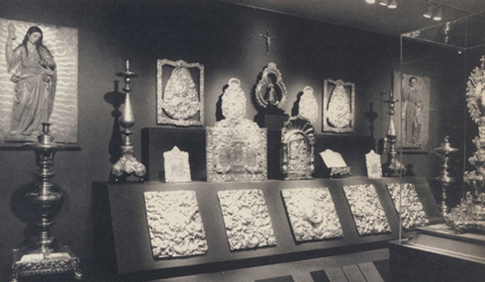Potosí: Colonial Treasures and the Bolivian City of Silver
On view:
through
Potosí: Colonial Treasures and the Bolivian City of Silver
Located in the high Andean plateau of southern Bolivia, Potosí is a legendary city whose fate was largely determined by its natural resources: In 1542 the Viceroyalty of Peru, which then governed the area that is now Bolivia, discovered that it was the site of rich veins of silver of the highest quality. The city itself was officially founded in 1545 by the Spanish Crown. Potosí's silver was extensively mined—largely by the forced labor of thousands of indigenous workers—resulting in tremendous population growth: By 1600, Potosí had reached its apogee, with 160,000 inhabitants, making it the largest city in the Americas and one of the largest in the world. The enormous concentration of people and wealth turned Potosí into an important marketplace as well as a center for artistic production, particularly painting, sculpture, and silverwork. Two centuries later, as the mines yielded diminishing wealth, the city began its slow decline. Although seldom visited and under appreciated today, Potosí was recognized by UNESCO in 1985 as a World Heritage Site.

This exhibition—the first ever to be organized on this subject— aimed at illuminating the long and complex history of Potosí, presenting works of art created there from the seventeenth to the nineteenth centuries. It included paintings and polychrome sculptures of religious subjects, and elaborate liturgical and secular silver objects. Important artists of the colonial period were represented in the exhibition: with paintings by Melchor Pérez Holguín, Gaspar Miguel Berrío, and Luis Niño; sculptures by Gaspar de la Cueva, and many works by unknown artists. The exhibition also featured objects reflecting Potosí's importance as a mining center, including early topographical views and manuscript pages depicting smelting operations. The works in this exhibition were drawn chiefly from museums, churches, and private collections in Potosí, La Paz, and other parts of Bolivia. The curators of the exhibition were Pedro Querejazu, Director of the Fundación BHN in La Paz, Bolivia, and Elizabeth Ferrer, Director of the Austin Museum of Art.
The illustrated, bilingual (Spanish-English) exhibition catalogue, including essays by Pedro Querejazu, historian Laura Escobari, and two of Bolivia’s foremost scholars, José de Mesa and Teresa Gisbert, is out of print, but available for research.
Potosí: Colonial Art and the Bolivian City of Silver was made possible with the support of many individuals from Bolivia and the United States.






